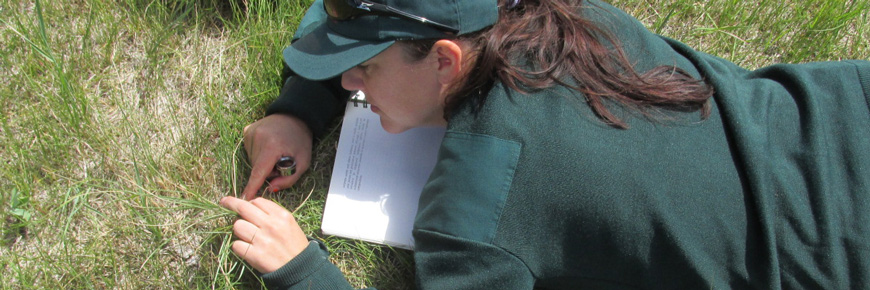
Grasslands
Elk Island National Park
While a large part of Elk Island National Park is forest, there are large patches of grassland ecosystems, particularly around the Bison Loop. Plains bison are vitally important to grasslands and create ideal conditions for plants and other animals to thrive on the plains. Bison grazing, trampling, wallowing, and defecating increases the biodiversity of both plants and animals in their wake. Because of these interdependent relationships, bison are critical to the story of both the loss and recovery of the Great Plains.
To determine the ecological health and integrity of grasslands, Park Ecologists and Geomatic Technicians work beside park field staff to monitor these five important ecological indicators;
Rangeland health
Rangeland health monitors multiple ecosystem components such as plant composition, animal use, soils, disturbance, invasive plants, and human influences...
Ungulate population survey
Protecting bison, elk, and moose in Elk Island National Park is a balancing act to ensure that populations do not become too big or too small.
Plant growth: Primary productivity
Losses in grassland cover can have changes on what plant and animal species are found in the park and how the grasslands are affected by periods of...
Grassland area burned
Fire is a naturally occurring phenomenon that plays a role in overall health of grasslands. Fire reduces forest encroachment into grassy meadows, promotes...
Aerial extent of Grasslands
By monitoring the changes in forest cover over time, park staff can determine the composition and location of plant communities throughout the park.
Related links
- Date modified :